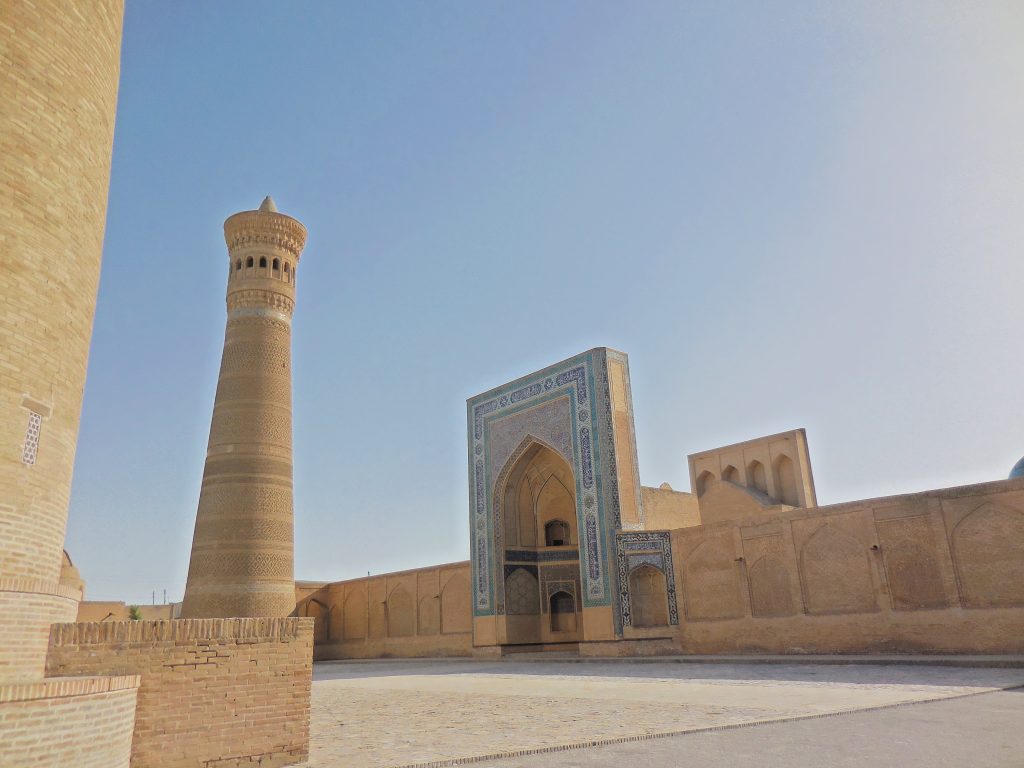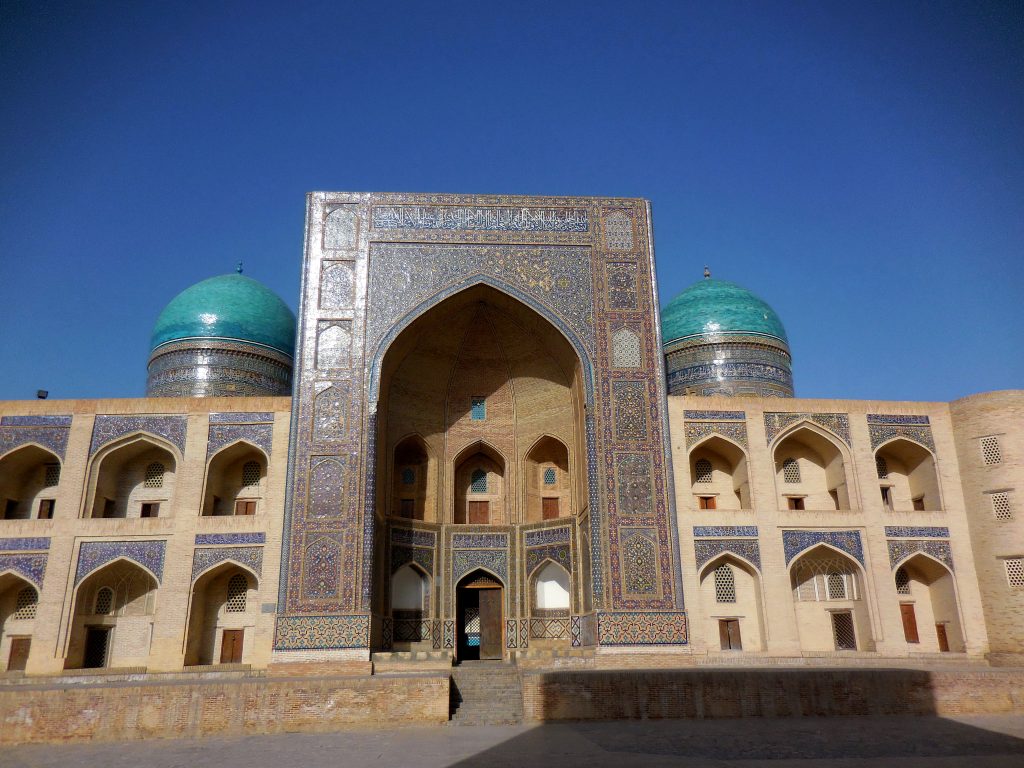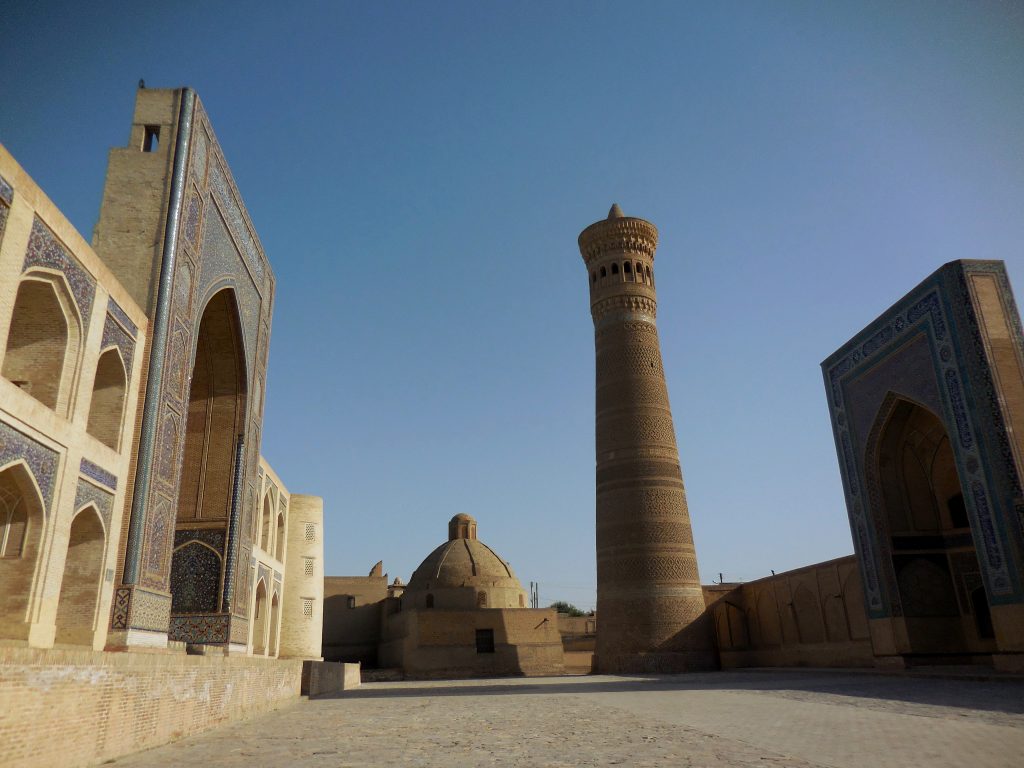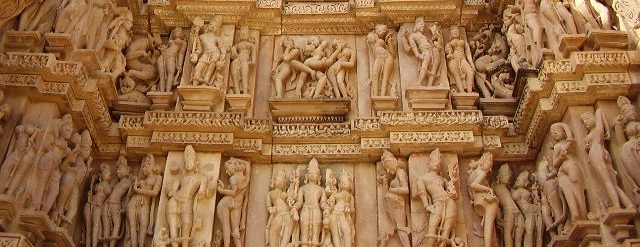Complex Poi Kalyan. Madras, Mosque and Kalyan Minaret, Bukhara
Complex Poi Kalyan. Madras, Mosque and Kalyan Minaret, Bukhara

If you want to visit Bukhara, the first image that is proposed by magazines or agencies is the complex of Poi Kalyan (“the pediment of the Great”); which includes the Madras Mir Arab, the Mosque and the Kalyan Minaret. The particularity of the square is that the minaret is not part of the walls of the Mosque, but remains in its own right. In this way a new perspective is created, which gives the place an exotic romantic charm. I could almost say that the Kalyan complex is the Islamic version of our Tower of Pisa, with the Baptistery and the attached Cathedral.
Madras Mir Arab

Built during the city’s revival by Schabanids, in the 16th century, the Madras owes its construction to the Yemeni Shah Sheikh Abdallakh Yamani, known as Mir Arab; who was the spiritual mentor of Khan Ubaydulla in power in Bukhara, who died in 1539.
The Madras is located in front of the Kalyan Mosque and, due to its sacred value, it can not be visited. The building was used as a religious university from its construction until the arrival of the Bolsheviks in 1920. To alleviate the mood of Muslims, Stalin allowed it to be reopen in 1944 and seminars on Islam are still held today. Throughout the Soviet period, political commissioners used to control the religious lessons; today such a kind of measure is not taken anymore.
The architectural scheme of the Madras is traditional: the rectangular courtyard is surrounded by two orders of cells ending at the corners of the facade with two cylindrical turrets. Two halls with a dome flank the majestic ogival portal, in which there are six equally gated openings on two orders. Under the northern dome lie the tombs of Mir Arab and Khan Ubaydulla. The exterior is decorated with turquoise mosaics and colorful geometric and phytomorphic figures.
The Kalyan Mosque

On the opposite side, it is possible to visit the Kalyan Mosque, one of the oldest in Central Asia; as evidenced by the archaeological excavations, which found more bases in the underground dating back to the 9th century. Entry inscriptions indicate that the construction of the current Mosque began in the 15th century and ended in 1514.
With the arrival of the Bolsheviks, the Mosque was closed in the 1920s and intended to be used as a warehouse. Reopened after the collapse of the USSR, it has been restored; according to the guide of Tiziano Terzani, the problem that remains in the restoration work is to find the turquoise tiles for the dome, since to create this particular color the craftsmen used human blood in the mixture, something that no longer happens today!
The building occupies about one hectare and its inner courtyard can accommodate 10,000 worshipers. The eastern portal, which stands out on the golden walls of a floor, is decorated with magnificent geometric mosaics and inscriptions from the Koran. Once you have climbed a few steps, you can admire the inner courtyard from the outside opening; with its unique order of ogive arches and the only leafy mulberry tree that gives shade to visitors. The two blue domes are placed one in front of the other, on the opposite side of the courtyard. The internal arches have exquisite decorations, of 14 different bands, using enamelled tesserae of a predominantly turquoise color.
I visited the mosque in the early morning, when the sun was already beating on the sandy road. The inside area was deserted and I took the opportunity to rest under the foliage of the mulberry tree, watched by the old keeper. The immobility of the air was transmitted to the earth and rose along the ancient walls, moved only by the geometric patterns of turquoise majolica. Moments of great peace.
The Kalyan Minaret

Symbol of Islam in the city, the Kalyan Minaret overlooks the square with its height of 46.5 meters (more than a dozen meters of foundation in the subsoil) and 9 meters in diameter at the base. The tower, which decreases in diameter upwards, has 12 different horizontal decorative bands and ends with sixteen open arches from which light enters. The bricks were welded with a glue made from egg whites and camel milk, which has held up to the present day.
On three of its old bands, it’s written the date of construction, 1127, the name of who ordered the project, the governor of Bukhara, Arslankhan, and the architect Usto Bako, whose tomb, in agreement with the legend, is located in one of the nearby blocks. The strong foundations have preserved the golden tower, which has also survived the fury of Genghis Khan. It is said that once he was at his base, to admire the Minaret his hat fell off. Being so impressed by the work, Genghis Khan orders his soldiers to spare the monument; fate not shared by the lateral Mosque.
The Tower served as a guard and control point for caravans that came along the Silk Road. At night a fire was lit on the summit to help the travelers arriving from the Red Sands Desert, the Kyzylkum. The minaret is connected to the roof of the Kalyan Mosque through a narrow covered bridge, from which you can reach the top through 105 steps. I tried to visit the interior, but access was denied to me.
There are many legends related to the Minaret, but also a dark side: in the history of Bukhara many Khan have ordered the execution of enemies and criminals by launching them into the void from its top. One among the Khan was so cruel to order the execution of his own wife by throwing her down from the minaret. However, the wise wife asked to be able to express her last wish and showed up on the gallows covered with all her clothes. Absolutely calm, she threw herself into the void and, thanks to her robes that acted as a parachute, reached the ground alive and intact amid the clamor of the people.
Sources
A.V., Bukhara, the city and the legends, Davr Nashriyoti, Tashkent, 2014
Tiziano Terzani, Buona notte, Signor Lenin, TEA, 1992, pp. 288-290
For further information about Bukhara, click here.

Pingback: The Ark Fortress, historical site in Bukhara, Uzbekistan